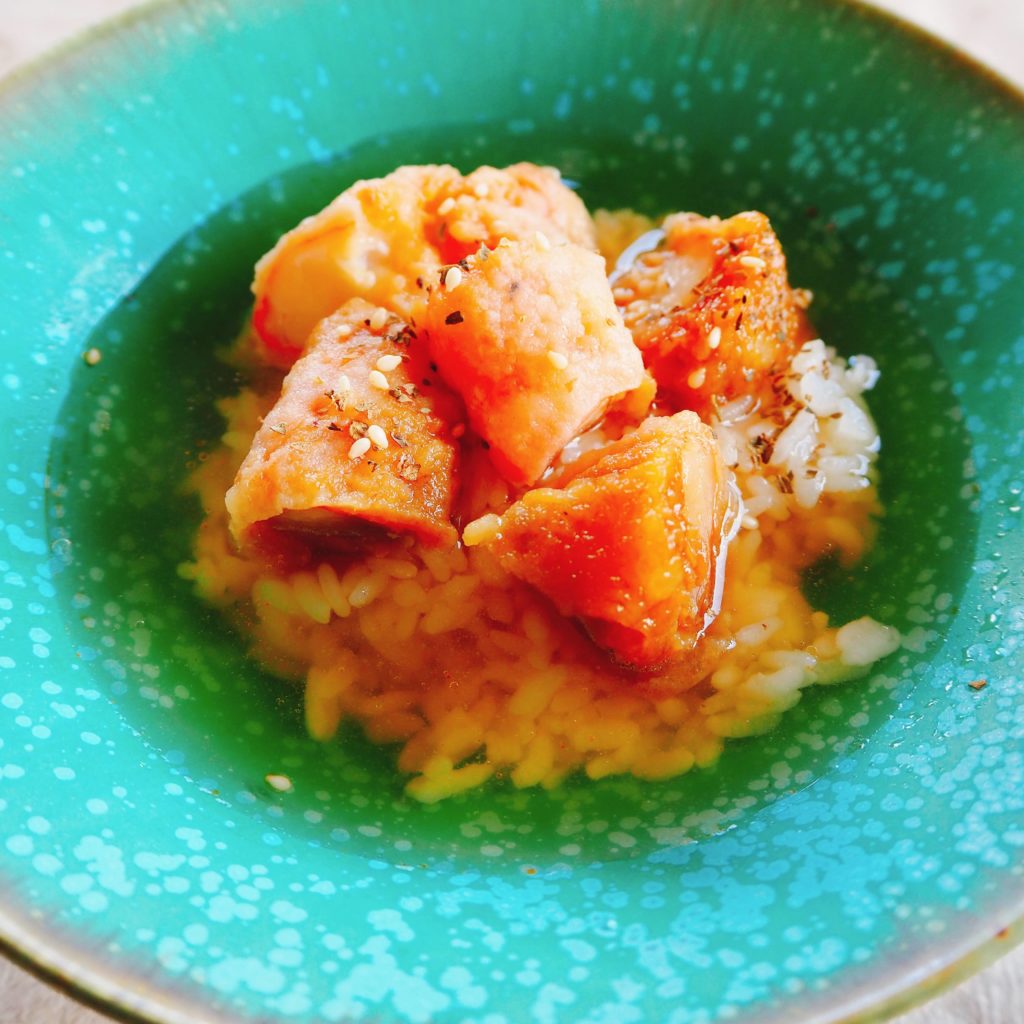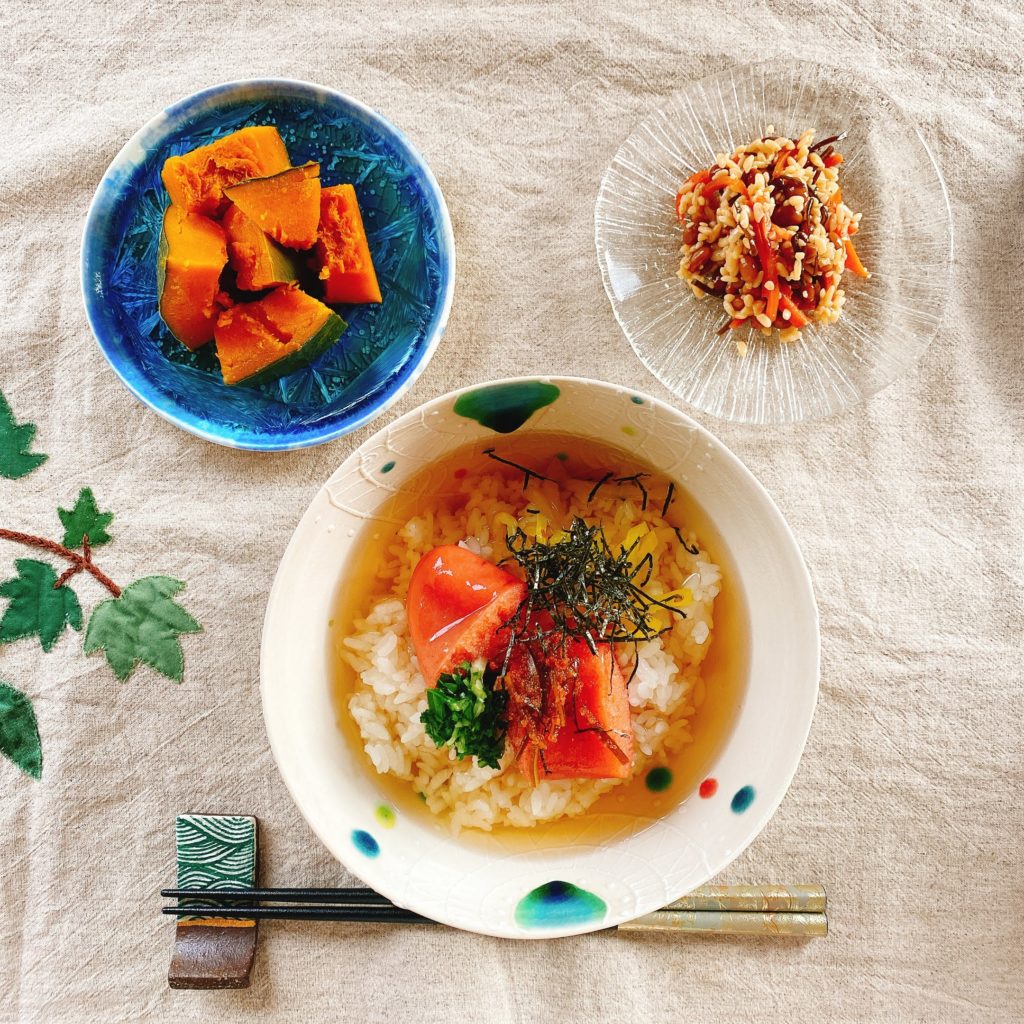Japanese Food History and Culture
Ochazuke: Tea and Rice
The humble ochazuke (お茶漬け, “tea soak”) is a staple of Japanese food, eaten in one form or another probably since rice cultivation was introduced in Japan. Conjuring images of a mother’s cooking for a busy student focusing on exams, it is a soothing meal, found in izakayas and high end restaurants or cooked at home with leftovers. Today, we’ll take a look at this discrete but ever present dish.
Heian yuzuke and suihan
A precursor of the ochazuke was the yuzuke (湯漬け, “hot water soak”), first mentioned in texts from the Heian period, such as Makura no sōshi by Sei Shōnagon.1 Up until the Meiji era and the industrialization of Japanese agriculture, only upper classes could afford to regularly eat white rice (白米, hakumai) and brown rice (玄米, genmai) was most commonly consumed.2 Without modern means of preservation, leftover rice would quickly harden and become difficult to eat. Yuzuke is thought to have been one way of easily making it soft and warm again, as well as washing off impurities at the surface of slightly spoiled rice. Rice could also be left to soak in cold water to make suihan (炊飯), notably during hot summer days.3
Yuzuke was commonly used by travelers and soldiers as a light and convenient meal. It is said that the Sengoku period (1467-1615 CE) warlord Оda Nobunaga had a habit of eating yuzuke on the eve of an important event, such as a battle.4

The 16th century warlord Oda Nobunaga. © Wikimedia Commons
Introduction of the tea and Edo period chazukeya
As tea consumption spread in the country following the introduction of the tea ceremony in the later years of the Muromachi period, the ochazuke started to emerge as an alternative to the yuzuke.
During the Edo period, ochazuke was most commonly eaten by working class people as a quick and cheap meal, often accompanied with tsukemono (漬け物, pickled vegetables). Bancha coarse tea or sencha green tea were most commonly used. As it gained in popularity, shops specializing in ochazuke started to appear in Edo (modern day Tōkyō).5 Catering to busy workers, those chazukeya (茶漬屋) were precursors to modern fast food restaurants. Some are mentioned and illustrated in the Edo Meisho Zue (江戸名所図会, Guide to Famous Edo Sites) describing the famous locations of Tōkyō.
Present day and local variations
Nowadays, ochazuke can be commonly found in homes and restaurants throughout Japan with a wide variety of styles and toppings. A common variation is the use of dashi broth in addition or instead of the tea (出汁漬け, dashizuke). Oft used toppings include katsuobushi, sesame seeds, nori seaweed, mentaiko and tarako (pollock roe), umeboshi pickled plums and salmon.
As it is healthy, easy to eat and digest, and quick to prepare, ochazuke is often eaten as a light meal. Ochazuke also conjures an image of a late night snack for students preparing for exams.
When eaten at izakaya and during parties, it is often ordered near the end of the dinner to wind down the atmosphere and signal the end of the evening. At high end restaurants serving course menus, ochazuke is served at the end of the meal as kuchi naoshi, a “palate refresher”. It is said that Kyōto hosts ask their guests if they would like some bubuzuke (Kyōto dialect for ochazuke) to imply it is time to return home!

Ochazuke topped with tempura and white sesame.

Ochazuke topped with mentaiko, nori, and tsukemono, served with kabocha no nitsuke and natto koji.